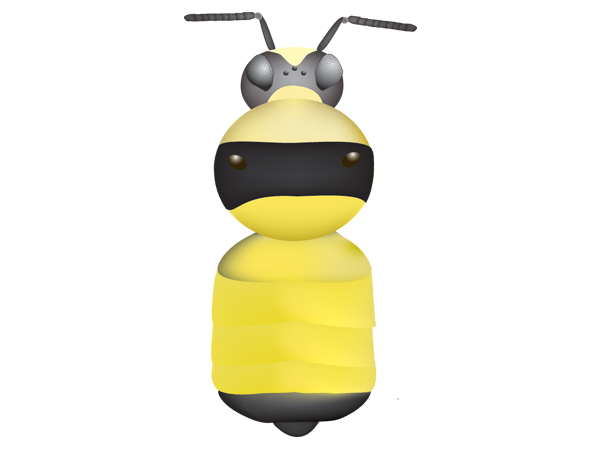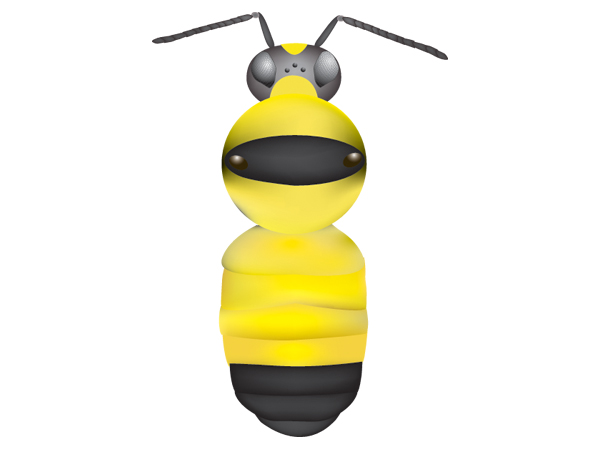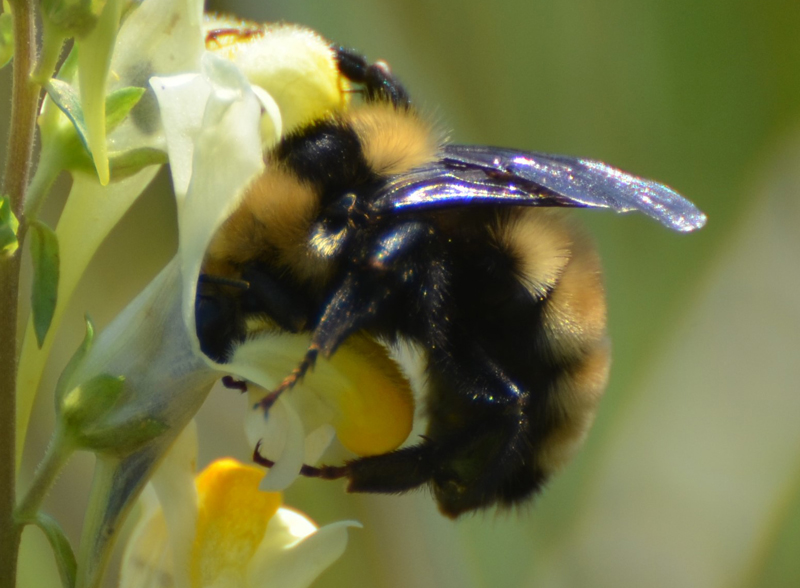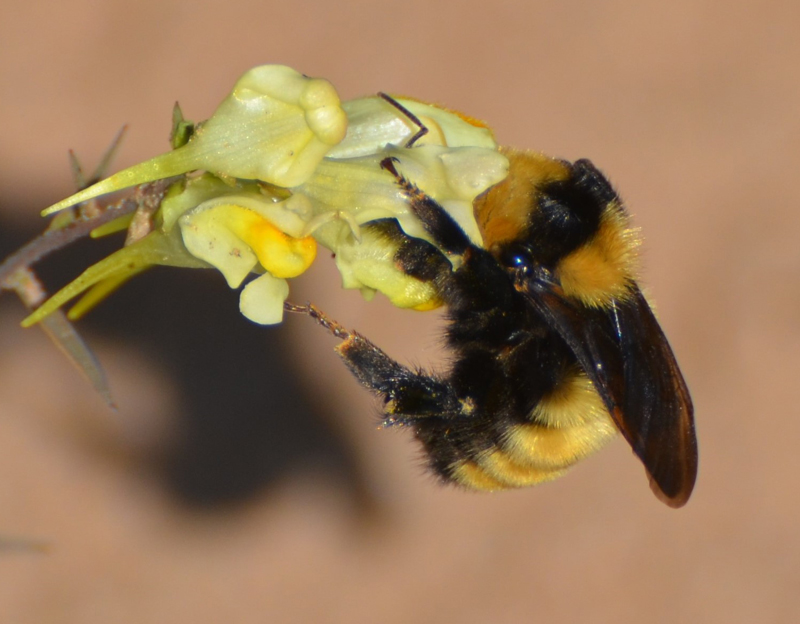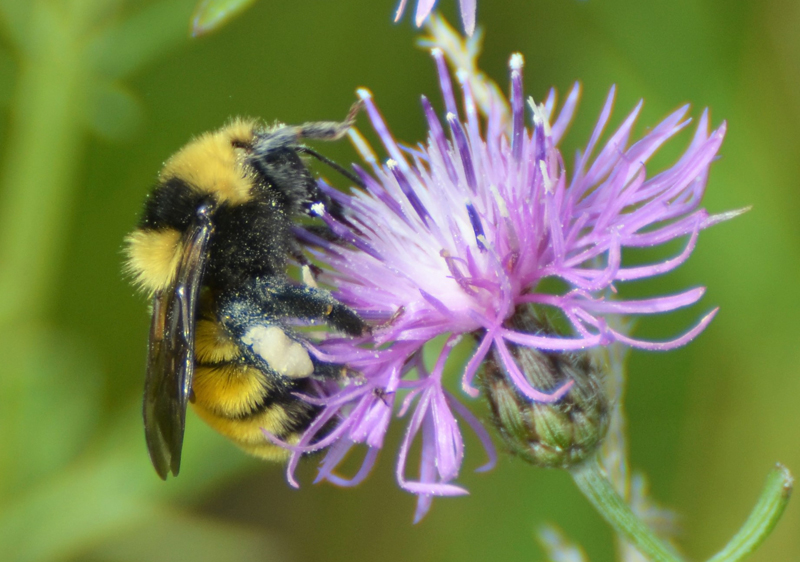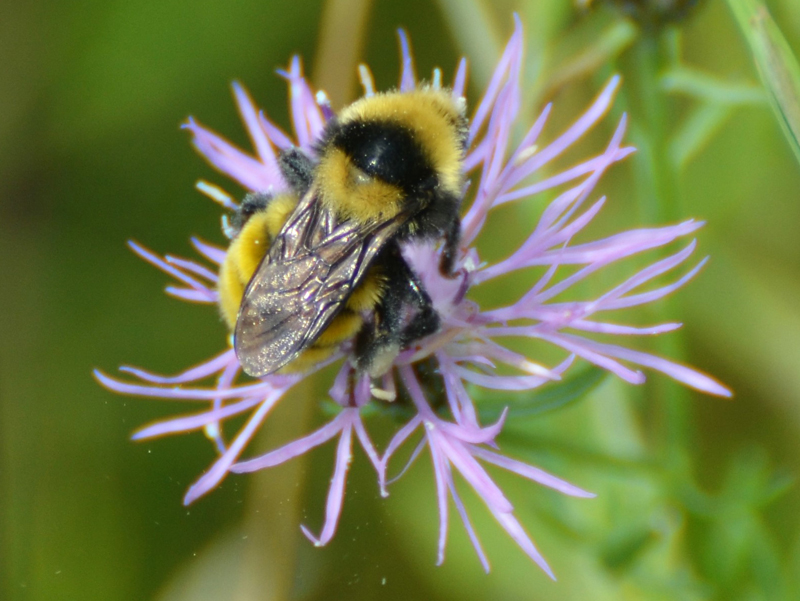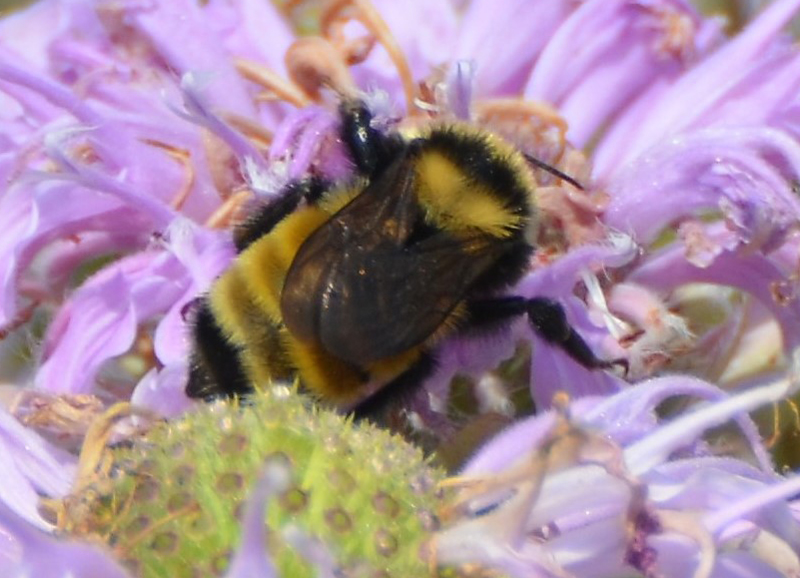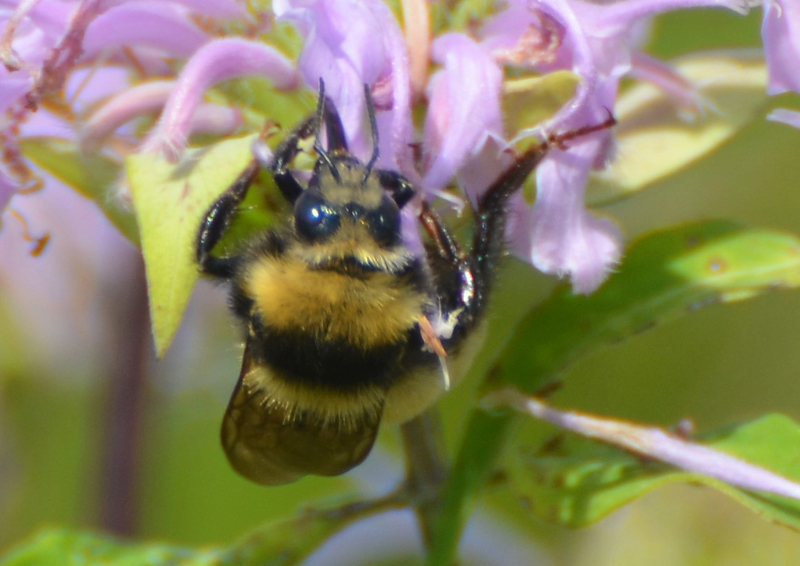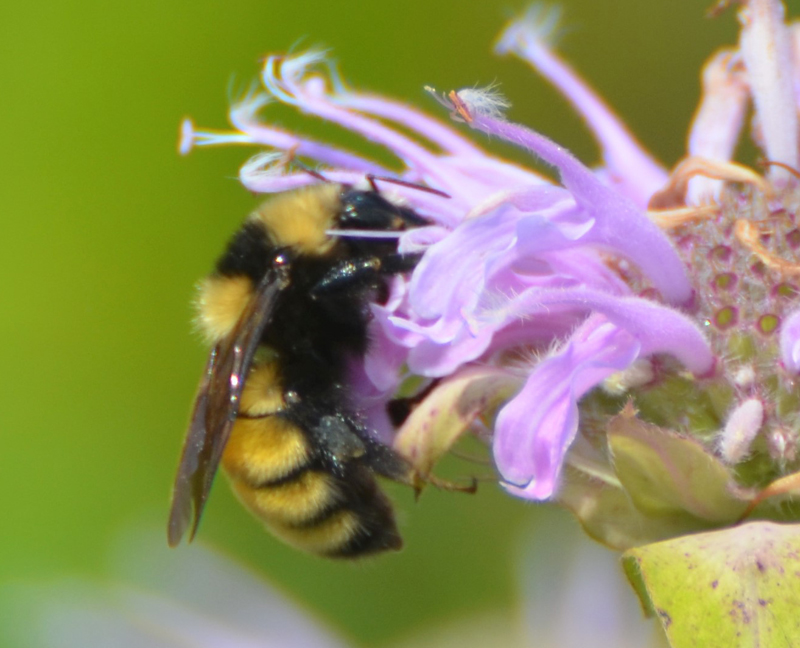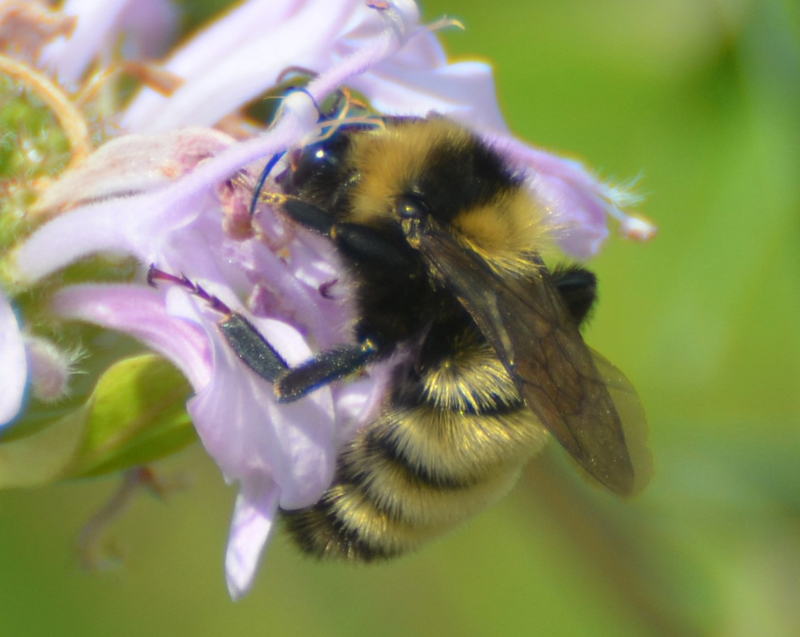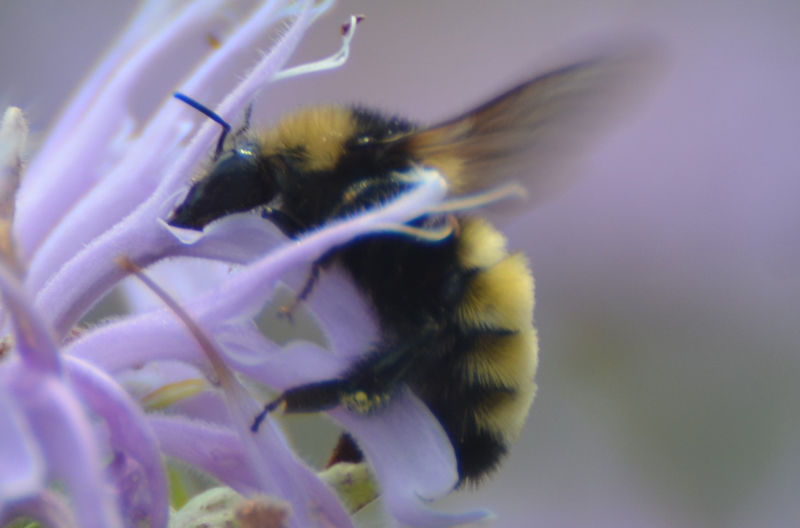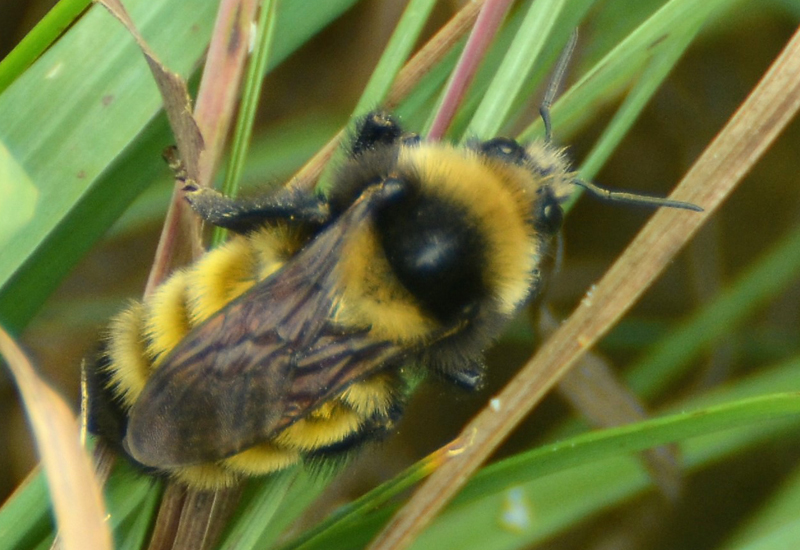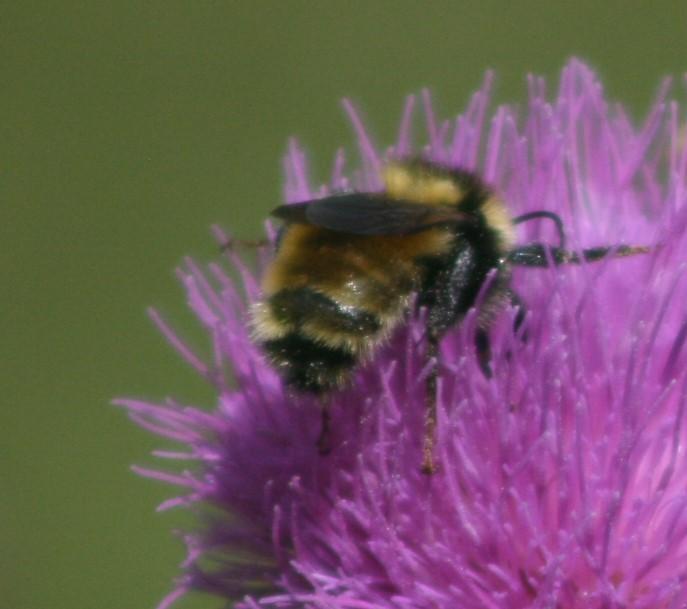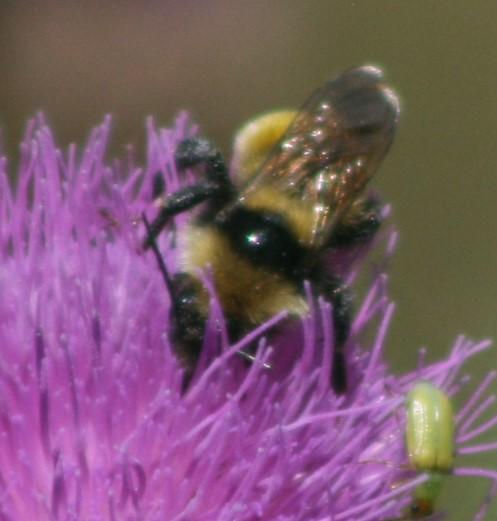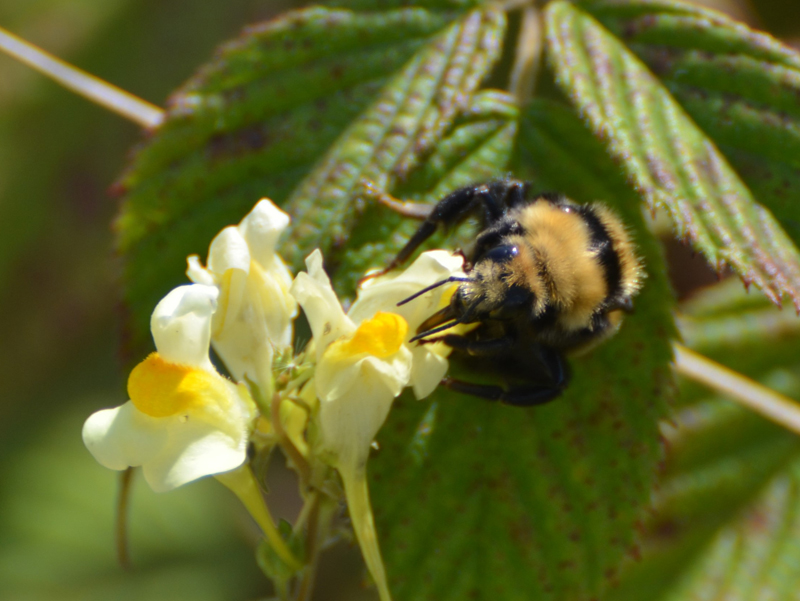
Status-Global/State:
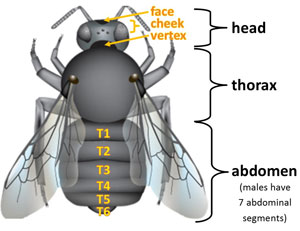
Identification:
- Worker – Face and vertex mostly yellow. Thorax with black band between the wingpads and on the lower sides. Abdominal segments T1-4 yellow, T5 usually mostly black and T6 black; sometimes has intermixed black on the sides on T2-4 and fringe of yellow on T5-6.
- Queen/gyne – Similar to workers, but are larger and appear earlier in the season.
- Male – Similar to workers. Abdominal segments T5-6 can be all black, or with fringes of yellow.
- Other distinguishing features – Hair medium and even.
Similar Wisconsin Species:
Similar bumble bee species in Wisconsin are the American bumble bee (B. pensylvanicus) and the yellow bumble bee (B. fervidus) (Colla et al. 2011, Williams et al. 2014).
Description of Habitat/Range:
Known habitats include woodlands, and nests are primarily underground (Williams et al. 2014).
Nectar Plants
The northern amber is a long-tongued species (Williams et al. 2014). Nectar plants include Asters, Astragalus (milk vetch), Carduus, Cirsium (thistles), Eupatorium (Joe-pye weed), Melilotus (sweet clover), Prunella, Rubus (blackberry), Solidago (goldenrods), Symphytum officinale (comfrey), Trifolium (clovers), and Vicia (vetches) (Williams et al. 2014, Colla et al. 2011).
Data from verified B3 observations [updated 2/28/2024].
Flight Season:
In Wisconsin, observations have been reported mostly between June and September. Range-wide, queens start emerging in May and enter diapause in October (Colla et al. 2011).
Literature Cited:
Colla, S., Richardson, L. and Williams, P. (2011) Bumble Bees of the Eastern United States. A product of the USDA Forest Service and the Pollinator Partnership with funding from the National Fish and Wildlife Foundation.
Hatfield, R., Jepsen, S., Thorp, R., Richardson, L. & Colla, S. 2015. Bombus borealis. The IUCN Red List of Threatened Species 2015: e.T44938377A46440336.
Williams, P.H., Thorp, R.W., Richardson, L.L. and Colla, S.R. (2014) The Bumble bees of North America: An Identification guide. Princeton University Press, Princeton.
